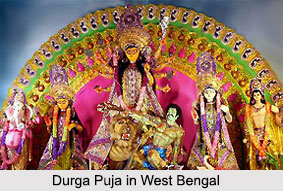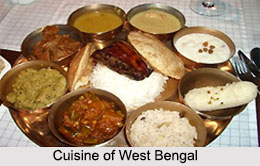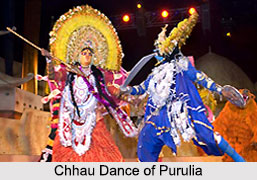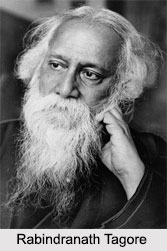 Culture of West Bengal boasts its richness in the reformation movements, making the whole of Oriental culture an upheaval. The proponents of Bengal Renaissance, Ram Mohan Roy, Vidyasagar, and also the Young Bengalis had largely contributed in carving the culture of West Bengal in the mold of Western thoughts. However the tradition and ethnicity were not uprooted, rather they were enmeshed with the new trends. Thus a cosmopolitan mindset was the natural outcome, embedding both the pros and cons of both the cultural practices.
Culture of West Bengal boasts its richness in the reformation movements, making the whole of Oriental culture an upheaval. The proponents of Bengal Renaissance, Ram Mohan Roy, Vidyasagar, and also the Young Bengalis had largely contributed in carving the culture of West Bengal in the mold of Western thoughts. However the tradition and ethnicity were not uprooted, rather they were enmeshed with the new trends. Thus a cosmopolitan mindset was the natural outcome, embedding both the pros and cons of both the cultural practices.
Literature of West Bengal
Rabindranath Thagore is the prime example among the creators of Bengali literature. Bengali language is a blend of Indo-Aryan speech. Bengali is the first Indian language to adopt western secular literary styles, such as fiction and drama. Bangla language boasts a rich literary heritage, with a flamboyant tradition in folk literature, attested by the masterpieces like Shreekrishna Kirtana, Charyapada and Mangalkavya. During 19th and 20th century, Bengali literature was modernised in the influences of authors such as Bankim Chandra Chattopadhyay, Michael Madhusudan Dutt.
 Music of West Bengal
Music of West Bengal
Music and dance are an inseparable part of the culture of West Bengal. Music comprises a long tradition of religious and secular themes, belonging to the North Indian classical musical `gharana`. Tappa is a semi-classical form, which had great vogue in 19th century Bengal. Ramnidhi Gupta or Nidhu Babu is its proponent and had penned a number of wonderful songs in Bengali. Thumri was a later arrival, having been introduced by Nawab Wazid Ali Shah of Oudh. Thumri was the lightest of all classical styles. Kazi Nazural Islam and Atulprasad Sen wrote many Thumri songs based on the theme of love.
Musical instruments are used to express the musical splendor. The "ektara", a single string instrument, mostly expended by Baul singers are pretty common among rural areas. Dugi, dotara, kartal, mandira and percussion instruments like khol is also used by the musicians during the performance.
The early 1990"s, was marked by the arrival of new genre of what has been called Jeebonmukhi Gaan (a modern genre based on realism).
 Dance of West Bengal
Dance of West Bengal
The popular dance forms belong to both Indian classical and tribal dance forms. Chhau dance of Purulia is a rare form of mask dance. It has some features of archaic `ritualistic` dance in its dynamism and supports primarily the drum. Dancers apply facial painting or body painting as the symbolic representations. They are thus distinguished as personifying the characters and the masks are worn afterwards.
Apart from these, the credit goes to the legend Uday Shankar for attributing his innovative dance in the manner of European ballet.
Festivals of West Bengal
Throughout the world, West Bengal is known for its plethora of festivals. The culture of West Bengal too is enriched by the festivals and also multiple rituals and rites are associated with these festivals. Durga Puja is the prime festival of the state. It commemorates the annual visit of Goddess Durga with her four children, namely Lakshmi, Saraswati, Ganesha and Kartikaya to her parent`s home on earth from her celestial residence on Mount Kailas. Bengalis celebrate it with new clothes and other gifts. The puja goes on for five days, commencing with the ritualistic induction of the Goddess. The ceremony of worship continues for three days and ends with the dousing of the effigy in a river or a pond on the `Vijaya Dashami`.
 Although it is a Hindu festival, the people of varied communities participate in this pomp and grandeur of Durgostav. The festive season continues till Kali puja, which takes place about three weeks later during Diwali to worship Goddess Kali. Animal sacrifices are usually made to the Goddess. Every home of Bengalis is illuminated with lamps along with the lights of firecrackers. Some other festivals of West Bengal are Dolyatra, Ratha Yatra, Rakhi Purnima, Lakshmi Puja, Saraswati Puja etc.
Although it is a Hindu festival, the people of varied communities participate in this pomp and grandeur of Durgostav. The festive season continues till Kali puja, which takes place about three weeks later during Diwali to worship Goddess Kali. Animal sacrifices are usually made to the Goddess. Every home of Bengalis is illuminated with lamps along with the lights of firecrackers. Some other festivals of West Bengal are Dolyatra, Ratha Yatra, Rakhi Purnima, Lakshmi Puja, Saraswati Puja etc.
Cuisine of West Bengal
Cuisine is an integral element of the culture of West Bengal. Rice and fish have become the trademarks of the Bengali community. Some other preparations are Daal Paturi, Dhokar Dalna, Mochar Ghonto, Shukto and many more. Sweets have also acquired a special place in Bengali cuisine, which also include the popular "Rosogolla". Other Bengali desserts are sandesh, chanar payesh, Chomchom, Kalojam and several kinds of Pithe and others. Bengali cook has also developed the expertise in preparing a special sweet from date palm jaggary called Patali gur. Langcha and mihidana-sitabhog of Bardhaman, sharbhaja of Krishnanagar, chanabora of Murshidabad are worthy to mention as well.



















